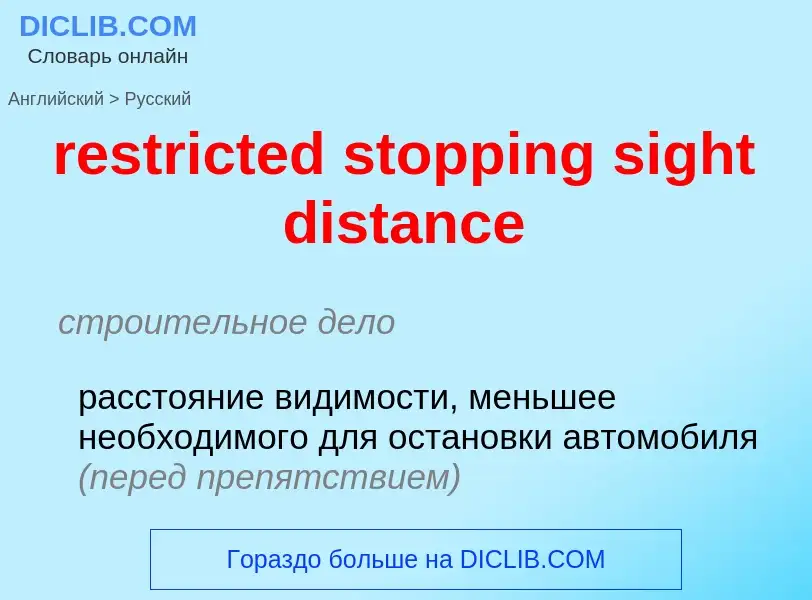Перевод и анализ слов искусственным интеллектом ChatGPT
На этой странице Вы можете получить подробный анализ слова или словосочетания, произведенный с помощью лучшей на сегодняшний день технологии искусственного интеллекта:
- как употребляется слово
- частота употребления
- используется оно чаще в устной или письменной речи
- варианты перевода слова
- примеры употребления (несколько фраз с переводом)
- этимология
restricted stopping sight distance - перевод на русский
строительное дело
расстояние видимости, меньшее необходимого для остановки автомобиля (перед препятствием)
Определение
Википедия

Braking distance refers to the distance a vehicle will travel from the point when its brakes are fully applied to when it comes to a complete stop. It is primarily affected by the original speed of the vehicle and the coefficient of friction between the tires and the road surface, and negligibly by the tires' rolling resistance and vehicle's air drag. The type of brake system in use only affects trucks and large mass vehicles, which cannot supply enough force to match the static frictional force.
The braking distance is one of two principal components of the total stopping distance. The other component is the reaction distance, which is the product of the speed and the perception-reaction time of the driver/rider. A perception-reaction time of 1.5 seconds, and a coefficient of kinetic friction of 0.7 are standard for the purpose of determining a bare baseline for accident reconstruction and judicial notice; most people can stop slightly sooner under ideal conditions.
Braking distance is not to be confused with stopping sight distance. The latter is a road alignment visibility standard that provides motorists driving at or below the design speed an assured clear distance ahead (ACDA) which exceeds a safety factor distance that would be required by a slightly or nearly negligent driver to stop under a worst likely case scenario: typically slippery conditions (deceleration 0.35g) and a slow responding driver (2.5 seconds). Because the stopping sight distance far exceeds the actual stopping distance under most conditions, an otherwise capable driver who uses the full stopping sight distance, which results in injury, may be negligent for not stopping sooner.


